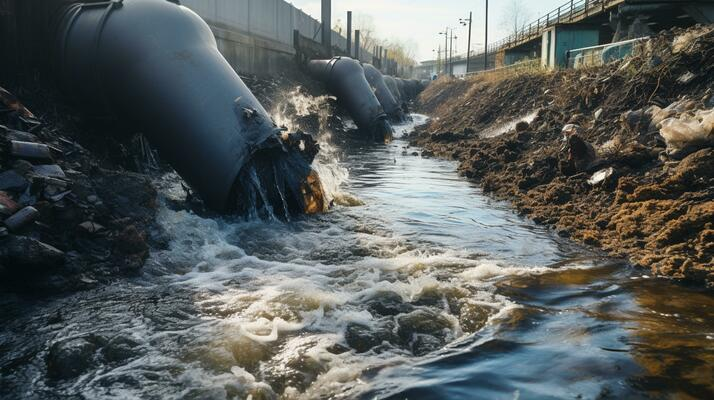
India, a country rich in rivers and water bodies, relies heavily on these resources for agriculture, drinking water, and industrial use. However, the alarming rise in industrial pollution has posed a significant threat to India’s water sources. This issue is becoming increasingly pressing as industrial activities continue to expand in scale and intensity, often at the expense of environmental sustainability.
Causes of Industrial Pollution
Industries contribute to water pollution in several ways. The discharge of untreated or inadequately treated wastewater is one of the primary culprits. Chemicals, heavy metals, and toxic substances from factories often find their way into rivers, lakes, and groundwater systems. Moreover, improper disposal of industrial waste and runoff from manufacturing facilities exacerbates the problem. Industries like textiles, pharmaceuticals, chemicals, and thermal power plants are among the major contributors to water pollution in India.
Impact on Water Sources
The contamination of water sources has far-reaching consequences. India’s rivers, including iconic ones like the Ganges and Yamuna, suffer from industrial pollutants that degrade water quality. High levels of toxins and heavy metals disrupt aquatic ecosystems, killing fish and other marine life. Groundwater, a crucial resource for millions of Indians, is also at risk, with arsenic and other pollutants detected in several regions.
The availability of clean water for drinking and irrigation is shrinking as pollution intensifies. This poses a serious threat to public health, as communities dependent on polluted water suffer from diseases like cancer, gastrointestinal problems, and skin disorders. Additionally, polluted water impacts agricultural productivity, as crops irrigated with contaminated water can absorb harmful substances.
Economic and Social Implications
Industrial pollution not only damages the environment but also has economic and social repercussions. Fishing communities, reliant on clean rivers for their livelihood, face financial difficulties as fish populations dwindle. The costs of water purification and healthcare for pollution-related illnesses strain public resources and individual finances. Moreover, industries themselves bear the brunt as water shortages affect operations and create the need for expensive treatment solutions.
Steps Toward Mitigation
Addressing industrial water pollution requires a concerted effort from the government, industries, and citizens. Stricter enforcement of environmental regulations, including penalties for non-compliance, is essential. Industries must adopt advanced wastewater treatment technologies and sustainable practices to minimize waste generation.
Public awareness campaigns and community participation can play a crucial role in protecting water sources. Restoration initiatives for polluted rivers and lakes, such as afforestation and bio-remediation, are vital steps toward ecological balance. Promoting water conservation and efficient usage is equally important to alleviate the pressure on water resources.
Conclusion
Industrial pollution is a pressing issue that demands immediate attention to safeguard India’s water sources. While the challenge is immense, the combined efforts of stakeholders can pave the way for cleaner and healthier water systems. Preserving India’s water resources is not just an environmental necessity but also a foundation for sustainable development, public health, and economic prosperity. Through collective responsibility and decisive action, India can combat industrial pollution and ensure a brighter future for its water ecosystems.


